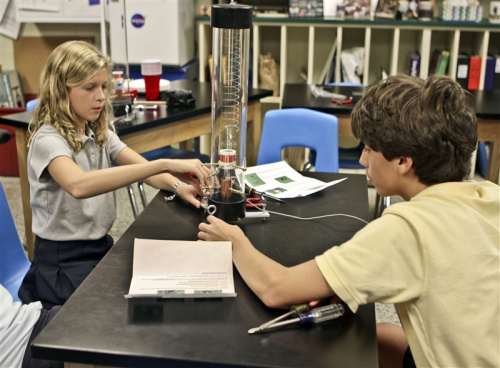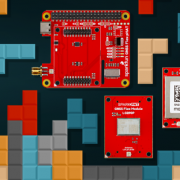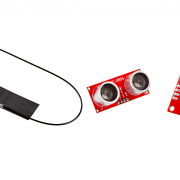Building Your Own Seismometer
How to make your own seismometer to measure ground activity, such as earthquakes and volcanic eruptions.
Ted Channel, the creator of the TC1 Seismometer, recently reached out to us to share his invention: an open source seismometer kit that users can build to measure ground activity. I wanted to share his designs, as this would be a fantastic kit for classes from junior high school through university.
Ted agreed to answer a few questions about the TC1, in case anyone wants to try their hand at building their own or using it in a classroom.
Can you briefly describe how your seismometer works?
The TC1 is a simple Slinky toy spring and coil, through which a very strong magnet passes, creating a current during an earthquake. The voltage is amplified and displayed on a computer, using free software. It is very simple but very capable. It can record local earthquakes at 2, 3 and 4M, and teleseismic earthquakes greater than 7M from around the world.
What could a group of students learn by making one and collecting data?
The TC1 is a great educational tool and an interesting adventure. Students and teachers will see, firsthand, Earth sciences in action. Electronics, Seismology, Geology, Magnetism, Geography, Physics and current events are just a few of the components users are exposed to.
Is there a group or community where people can share their findings?
Incorporated Research Institutions for Seismology (IRIS) is the biggest in the US, but there are others. The software, JamaSeis, allows your school’s TC1 data screen Helicorder to be viewed remotely. Once online with IRIS, you can stream your data and view other schools' recorded earthquakes from around the world.
Where can teachers and students get the components? You offer a kit, right?
I only sell the unit as a complete package: the sensor; the interface, which uses an Arduino Uno; and cables. All you add is the curiosity and a computer with the loaded software. Contact me directly through my site.
If I wanted to put one together with my own materials, is there a tutorial on how to do that?
My website offers a how-to: https://tc1seismometer.wordpress.com/2012/06/18/tc1-vertical-seismometer-plans.
What do you use to read the data from the seismometer? Could I hook it up to an Arduino?
The sensor feeds the voltage into a circuit board amplifier, from there it goes into an Arduino Uno coded to add filters and gains, and from there, feeds into the software. This interface is built into the sensor base and requires nothing additional – just your computer and the free software. The circuit already has an Arduino, and the Arduino is coded.
Want to see something cool? Check out all the earthquakes recorded by and stations connected to the IRIS network.
<
div style="margin: 20px 0;">









